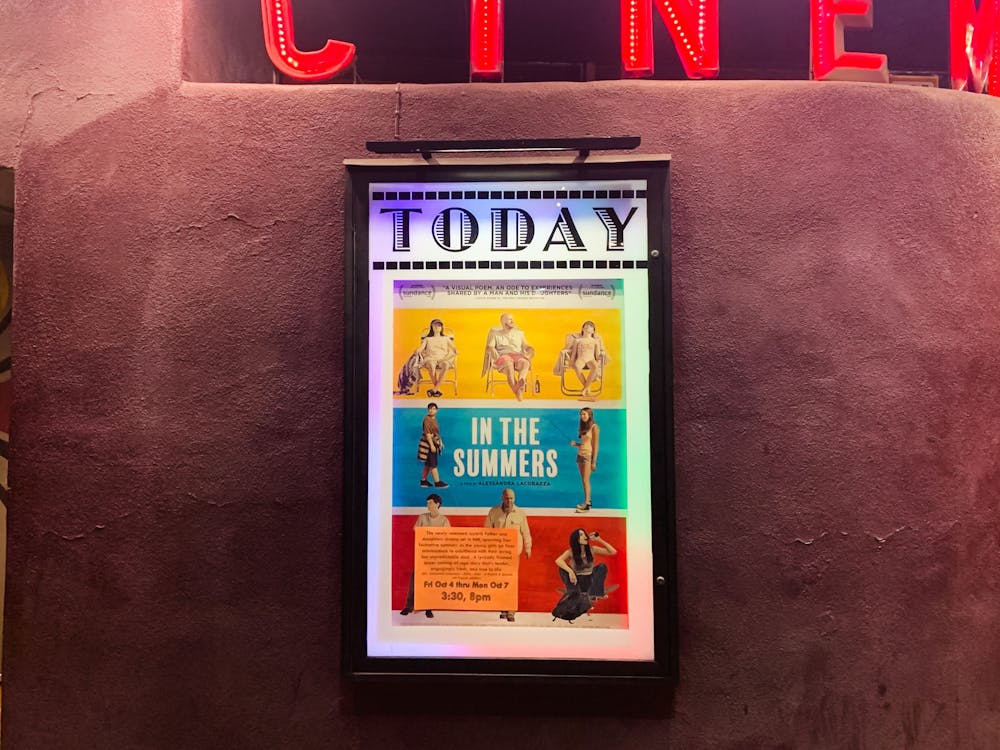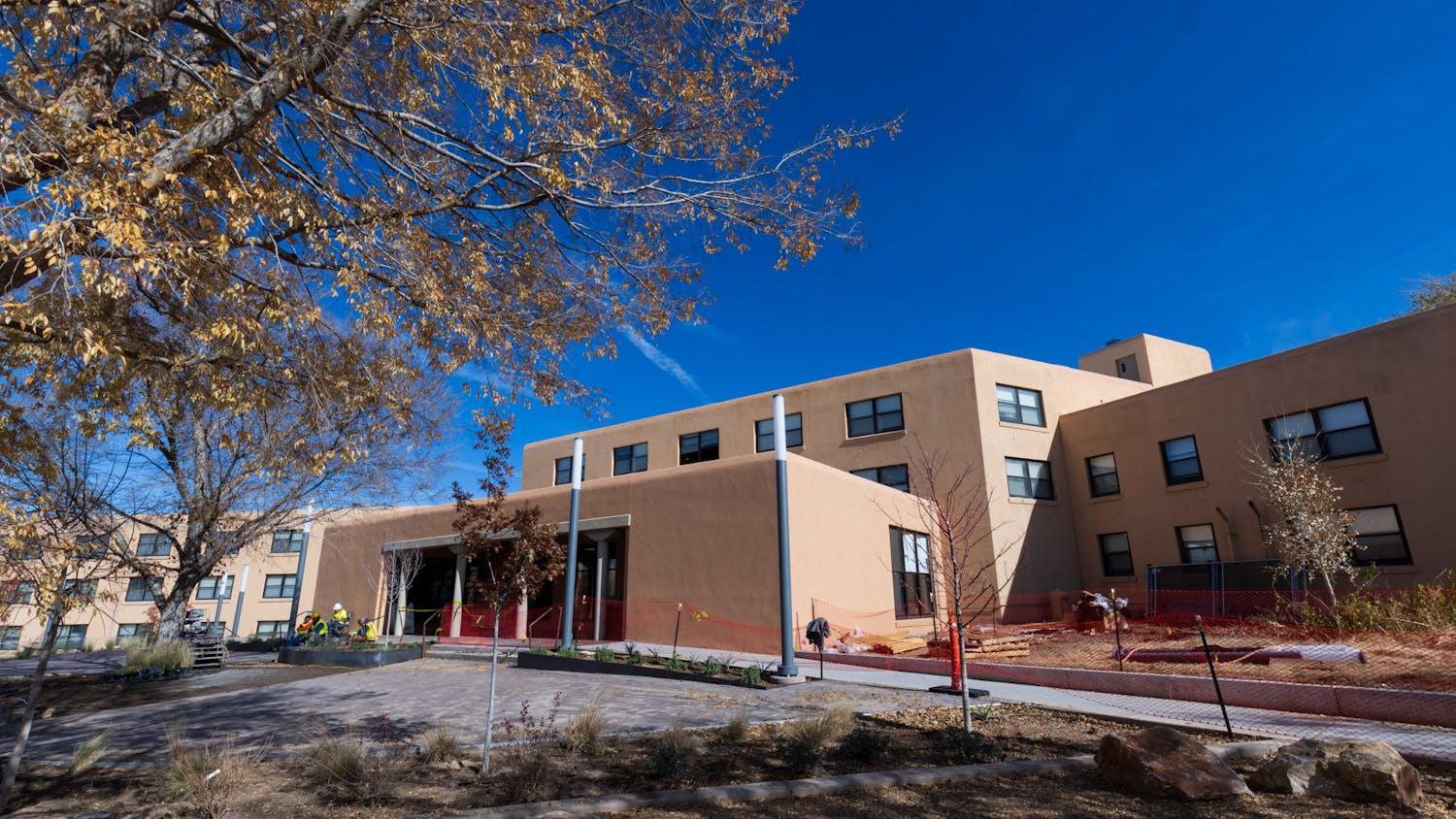Starting on Oct. 4 and spanning four days, Albuquerque’s Guild Cinema played Colombian American filmmaker Alessandra Lacorazza Samudio’s debut feature “In the Summers.”
The film tells the story of Violeta and Eva, two sisters from Los Angeles who visit their father Vicente in Las Cruces, New Mexico every summer. Their story is told in four chapters that span four different summers, as the sisters grapple with first love, mental health, sexuality and — most importantly — their turbulent relationship with their father, who is an addict.
“In the Summers” originally premiered in January at the 40th Sundance Film Festival, taking home both the Grand Jury Prize for Best Film and the Director's Award in the United States dramatic competition — making Lacorazza Samudio the first Latina filmmaker to win the latter, according to De Los.
Violeta and Eva are each played by three different actors throughout the course of the film, showing them as children, teenagers and eventually adults. This creates a feeling in the viewer’s mind that they are watching the sisters grow up in real time.
Filmed in Las Cruces and the surrounding area, “In the Summers” vividly portrays both the natural beauty of New Mexico and the state’s rich Hispanic culture. Cinematographer Alejandro Mejía’s camera repeatedly strays to the desert landscape that surrounds the characters, positioning them as mere dots amid the vastness of the natural world.
In a pivotal scene, the two sisters and their father — along with Vicente’s youngest daughter and Violeta and Eva’s half sister, Natalia — take a trip to White Sands National Park.
The New Mexico landmark serves as a backdrop for a heartfelt moment of multigenerational bonding. After the father and elder daughters sled down the dunes, they have to coax a timid Natalia to take the plunge. The scene tenderly shows how communal Hispanic families are; every member of the family is involved in raising the next generation.
Lacorazza Samudio’s film shows off the Hispanic community of Las Cruces with pride. The sisters regularly shop at a neighborhood carniceria — or meat market — with its blue and red sign perfectly matching the radiant New Mexico sky.
Each time a new chapter begins, the chapter number is set against a tableau of different knickknacks, family portraits, props from the film and other signifiers of the characters' identities. These arrangements, which are reminiscent of ofrendas — home altars constructed to remember deceased family members on Día de los Muertos — are a crucial addition to the film’s lush visual language.
“In the Summers” features a considerable amount of lines spoken in Spanish, but subtitles are not included to translate these parts. Lacorazza Samudio explained this decision prior to the film, saying that the Spanish parts of the script go untranslated to better reflect the language barrier among some members of the Latin diaspora in the United States, according to Boston Hassle.
Vicente often speaks to his daughters in Spanish, and they respond to him in English. They clearly understand him, but choose to speak to him in their own first language, highlighting the fact that fluency in Spanish is decreasing among Hispanic American youth.
According to Pew Research Center, only 34% of third- or higher-generation Latinos can carry on a Spanish-language conversation “at least pretty well.”
Get content from The Daily Lobo delivered to your inbox
Alongside the film’s focus on Hispanic American girlhood, “In the Summers” depicts what it is like to grow up Hispanic and Queer. Lacorazza Samudio, who identifies as Queer, beautifully renders Violeta’s journey in coming to terms with her sexuality, as she moves from awkwardly flirting with girls as a teenager to reveling in the joys of first love as a mature, self-assured lesbian.
Violeta is assisted in her coming out process by Carmen, a family friend who owns a bar that the characters frequent. She serves as an example for Violeta of an out-and-proud lesbian who is confident and secure in her sexuality, even though it can be a point of contention between her and Vicente, whose subconscious conservative ideals can rear their ugly heads during arguments with Carmen.
“In the Summers” is radical in its depiction of two generations of Hispanic American lesbians, a group that is extremely underrepresented in media.
A striking debut, “In the Summers” stands as a representation of the Hispanic American experience that is heartbreaking and heartwarming in equal measure — one that announces Lacorazza Samudio as a singular voice in American independent cinema.
Elijah Ritch is a freelance reporter for the Daily Lobo. They can be reached at culture@dailylobo.com or on X @dailylobo






